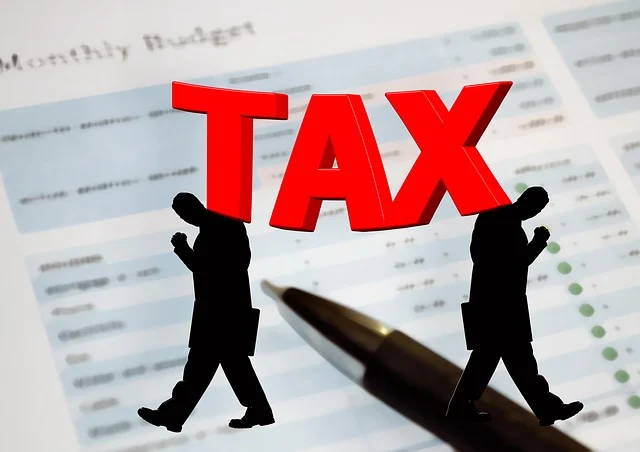Understanding the Italian Tax System: A Comprehensive Guide

Italy, with its rich history, stunning landscapes, and vibrant culture, is a dream destination for many. Whether you’re planning to move to Italy, invest in Italian real estate, or simply do business in the country, understanding the Italian tax system is crucial. The Italian tax framework can be complex, but with the right guidance, you can navigate it effectively. In this article, we’ll break down the essentials of the Italian tax system, covering everything from income tax to VAT, property taxes, and more.
1. Overview of the Italian Tax System
The Italian tax system is governed by the Agenzia delle Entrate (Italian Revenue Agency), which oversees the collection of taxes and ensures compliance. Like many European countries, Italy operates on a progressive tax system, meaning that individuals and businesses are taxed based on their income levels. Taxes in Italy are divided into two main categories:
- Direct Taxes : These include personal income tax (IRPEF), corporate income tax (IRES), and regional taxes.
- Indirect Taxes : These include Value Added Tax (VAT) and excise duties.
Italy’s tax system is designed to fund public services such as healthcare, education, infrastructure, and social security. However, it’s important to note that tax rates can vary depending on your residency status, income level, and the region in which you live.
2. Personal Income Tax (IRPEF)
The Imposta sul Reddito delle Persone Fisiche (IRPEF) is the primary tax levied on individuals’ income in Italy. It applies to both residents and non-residents, though the scope of taxation differs.
Who Pays IRPEF?
- Tax Residents : Individuals who reside in Italy for more than 183 days per year are considered tax residents and must pay IRPEF on their worldwide income.
- Non-Residents : Non-residents are only taxed on income earned within Italy.
Tax Rates
Italy uses a progressive tax rate system for IRPEF, with rates ranging from 23% to 43% , depending on income brackets. Here’s a breakdown of the current rates (as of 2023):
| Income Bracket (EUR) | Tax Rate (%) |
|---|---|
| Up to 15,000 | 23% |
| 15,001 – 28,000 | 25% |
| 28,001 – 50,000 | 35% |
| Over 50,000 | 43% |
In addition to these rates, taxpayers may also be subject to municipal and regional surcharges , which can increase the overall tax burden.
Deductions and Allowances
Italy offers various deductions and allowances to reduce taxable income. Common deductions include:
- Mortgage interest payments
- Medical expenses
- Charitable donations
- Education costs
It’s essential to consult a tax advisor to ensure you’re maximizing available deductions.
3. Corporate Income Tax (IRES)
For businesses operating in Italy, the Imposta sul Reddito delle Società (IRES) is the equivalent of corporate income tax. As of 2023, the standard IRES rate is 24% . Additionally, companies are subject to a Regional Tax on Productive Activities (IRAP) , which varies by region but typically ranges from 3.9% to 8.5% .
Small and medium-sized enterprises (SMEs) may benefit from reduced tax rates and incentives aimed at fostering economic growth. For example, startups and innovative businesses often qualify for special tax breaks.
4. Value Added Tax (VAT)
Italy, like other EU member states, imposes a Value Added Tax (IVA) on goods and services. The standard VAT rate in Italy is 22% , but reduced rates apply to certain categories:
- 10% : Applies to essential goods such as food, water, and agricultural products.
- 5% : Reserved for specific items like books and pharmaceuticals.
- 4% : Used for basic necessities like bread and milk.
Businesses registered for VAT must charge the appropriate rate and remit the collected tax to the government. They can also claim credits for VAT paid on purchases related to their business activities.
5. Property Taxes in Italy
If you own property in Italy, you’ll need to be aware of two key property taxes:
IMU (Imposta Municipale Unica)
The IMU is an annual municipal tax on property ownership. Rates vary depending on the location and type of property. Primary residences often enjoy lower rates or exemptions, while secondary homes and commercial properties are taxed at higher rates.
TARI (Tassa sui Rifiuti)
The TARI is a waste management tax levied on property owners. The amount depends on the size of the property and the local municipality’s waste disposal costs.
6. Wealth and Inheritance Taxes
Italy imposes a wealth tax known as IVIE (Imposta sul Valore degli Immobili all’Estero) on foreign-owned properties held by Italian residents. Additionally, there is an inheritance and gift tax (Imposta di Successione e Donazione ) that applies when assets are transferred upon death or as gifts. Rates range from 4% to 8% , with exemptions for close family members.
7. Double Taxation Treaties
Italy has signed double taxation treaties with numerous countries to prevent individuals and businesses from being taxed twice on the same income. If you’re a foreign national living or working in Italy, it’s worth exploring whether your home country has a treaty with Italy to avoid unnecessary tax burdens.
8. Tips for Navigating the Italian Tax System
Navigating Italy’s tax system can be challenging, especially for expats and newcomers. Here are some tips to help you stay compliant and minimize your tax liability:
- Hire a Local Tax Advisor : A qualified accountant or tax consultant can help you understand your obligations and identify potential savings.
- Keep Detailed Records : Maintain accurate records of income, expenses, and deductions to simplify filing and audits.
- Stay Updated : Tax laws in Italy frequently change, so staying informed about updates is crucial.
- Leverage Digital Tools : The Italian Revenue Agency provides online platforms for filing taxes and accessing resources.



